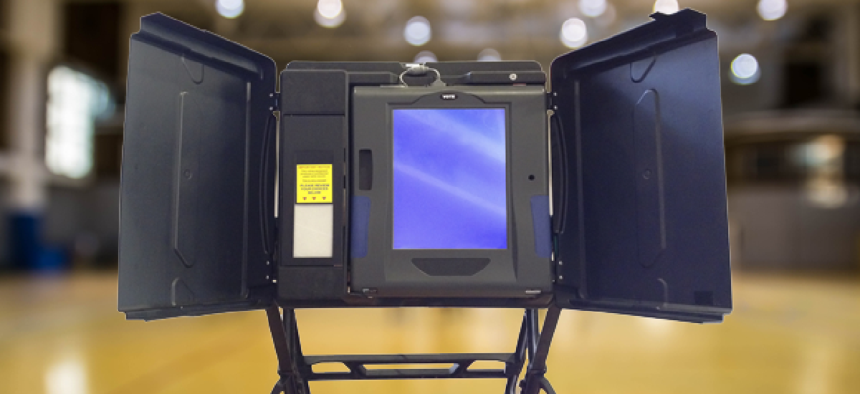Most jurisdictions satisfied with voting machines, GAO finds

Security and lifecycle replacement remains a concern for localities, but an investigation of hundreds of jurisdictions found broad satisfaction with the way equipment performed during the 2016 election.

Most local election jurisdictions are pretty happy with the performance of their voting machines and equipment.
According to an April 11 report from the General Accountability Office, 32 percent of voters voted in jurisdictions that relied on direct recording electronic voting machines, a model that security experts believe is susceptible to being hacked and that often lacks paper backups.
However, survey results found that, security concerns aside, those that do use direct recording machines wound up reporting higher rates of satisfaction around vote count accuracy, efficiency and ease when conducting maintenance compared to those using the other major model, optical scan ballots. Optical scan ballots rated higher for defenses against hacking, while direct recording machines got higher scores around protection from threats unrelated to cybersecurity.
Out-of-date equipment and technology has led to worries by some election administrators and third-party experts, but GAO found that those concerns have not trickled down to local election jurisdictions.
"We estimate that jurisdictions with 93 percent of the population did not experience equipment errors or malfunctions on a 'somewhat' or 'very' common basis during the election," wrote investigators.
Additionally, localities representing around 96 percent of the country's population said they were very or generally satisfied with the way their voting equipment performed in 2016.
The report came at the request of a Congress still grappling with fallout from the 2016 election and worried about aging and insecure voting machines. The agency identified four key factors that election officials consider when deciding to replace old voting equipment: cost, the ability to meet federal, state and local standards, timely maintenance and vendor support, and overall performance.
Currently, 13 states still rely in part or in whole on paperless voting systems. One of those states, Pennsylvania, is frequently considered a critical swing state during presidential elections and, according to data from the Brennan Center, had 6.7 million registered voters who voted on machines without paper backups of any kind -- the most in the country. On April 12, Pennsylvania's acting secretary of state ordered all jurisdictions to have voter-verifiable paper record voting systems in place no later than Dec. 31, 2019.
The recently passed omnibus spending package included $380 million in assistance to states to replace outdated voting equipment, while bipartisan legislation in Congress to do more recently picked up the support of Senate Intelligence Committee leaders Richard Burr (R-N.C.) and Mark Warner (D-Va.).
However, the GAO report makes clear there is still ample room for additional dollars from states and the federal government. More than half of the 46 states that responded to GAO said they don't provide any grants or funding to localities for new voting equipment, and just 10 percent of jurisdictions reported having leftover funds from the 2002 Help America Vote Act for the same purpose.
GAO officials surveyed 564 local jurisdictions and 46 states and conducted in-depth interviews with five localities and seven voting machine manufacturers.





